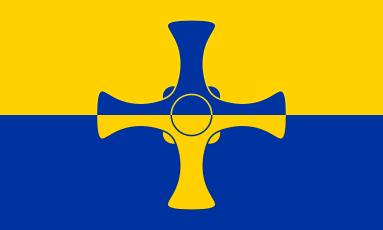Visit Explore London
Visit Explore London
 About - Durham
About - DurhamConstituent country - England
No. of Areas - 4
Population - 866,846
Area - 2,721 km2
Pop. Density - 324 km2
Durham County, located in the northeast of England, is rich in history, culture, and natural beauty. Here are key facts about Durham County:
Historic Durham City: The county town is Durham City, famous for its stunning Norman cathedral and castle, both of which are UNESCO World Heritage Sites. The cathedral is particularly renowned for its magnificent architecture and houses the shrine of St. Cuthbert.
Durham University: Durham is home to one of the oldest universities in England, Durham University, founded in 1832. It is consistently ranked as one of the top universities in the UK and is known for its collegiate system.
Durham Dales: The county is characterized by its picturesque countryside, including the Durham Dales, which encompass the North Pennines Area of Outstanding Natural Beauty (AONB). This area offers stunning landscapes, quaint villages, and opportunities for outdoor activities such as hiking and cycling.
Industrial Heritage: Durham has a rich industrial heritage, particularly in coal mining and ironworking. The Durham Coalfield was once a major source of coal production in the UK, and remnants of this industrial past can still be seen in various parts of the county.
River Wear: The River Wear runs through Durham City and is a prominent feature of the landscape. It has played a significant role in the county's history, serving as a source of water, transportation, and power for industries.
Bishop Auckland: This historic market town in County Durham is known for its connection to the Prince Bishops of Durham. It is home to Auckland Castle, the former residence of the Prince Bishops, and now houses the Zurbarán paintings, a series of 17th-century Spanish artworks.
Beamish Museum: Located near Stanley, Beamish is an open-air museum that vividly depicts life in the North of England during the 1820s, 1900s, and 1940s. It offers visitors a glimpse into the region's industrial past, with reconstructed buildings, period costumes, and working exhibits.
Durham Coast: The Durham coastline, stretching from Seaham to Hartlepool, offers breathtaking views of cliffs, beaches, and dramatic seascapes. The Durham Heritage Coast is designated as a conservation area due to its geological importance and rich biodiversity.
Durham Light Infantry: The Durham Light Infantry (DLI) was a historic regiment of the British Army with roots dating back to the 18th century. It played a significant role in various conflicts, including World War I and World War II, and is commemorated in several memorials across the county.
Durham Miners' Gala: Also known as the "Big Meeting," the Durham Miners' Gala is an annual event that celebrates the mining heritage of the region. It features parades, speeches, and entertainment, drawing crowds from across the country.
Lumiere Durham: Lumiere is the UK's largest light festival, held biennially in Durham City. The event transforms the city's historic landmarks and streets with dazzling light installations created by artists from around the world, attracting thousands of visitors.
Durham Cricket Club: Established in 1882, Durham County Cricket Club is one of the 18 first-class county clubs in England and Wales. The club's home ground is the Riverside Stadium in Chester-le-Street, where both domestic and international cricket matches are held.
These facts offer just a glimpse into the rich history, culture, and natural beauty that Durham County offers.